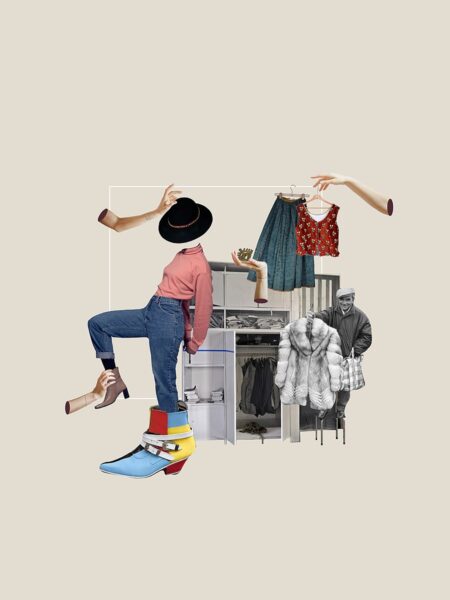
Fashion and popular culture trends serve a multifaceted purpose. They not only are a tool for empowerment and innovation but also operate as nostalgic devices. The unpredictable nature of trends and the rapid dissemination of information throughout the internet has meant trends spread like viruses, evolving into new forms every day. A trend, by nature, is a reinvention of something which already exists, expressed in a novel and interesting way through various media outlets. Ranging from the 1920s flapper style to the 1960s miniskirt, to the athleisure of the 2010s, trends are both temporally and culturally dependent, functioning like a domino effect. The showcasing of new styles using visual platforms creates a buzz, and the ability for the ordinary consumer to emulate these trends increases their visibility via user-generated content.
The symbiotic relationship between social media and fashion trends is something of note. Vogue writer and fashion commentator Alexandra Hildreth mused that “you can tell someone’s screen time from their outfit,” meaning the more an individual is consumed by TikTok and Instagram, the more their fashion sense is informed by personalised algorithms, influencers, and e-commerce integration. In a time when F.O.M.O is rife, and creativity is at an all-time high, brands are pressured to predict movements in consumer tastes faster than ever before.
The showcasing of new styles using visual platforms creates a buzz, and the ability for the ordinary consumer to emulate these trends increases their visibility via user-generated content.
One trend which reemerged in 2023 is leopard print, a pattern synonymous with feline femininity and playful elegance. The catchphrase “leopard print is a neutral” is being tossed around on TikTok, with the print being worn throughout both casual and high fashion. Mainstream brands such as ZARA are implementing the style into their collections, while designer brands such as Jacquemus are also featuring the print in the form of their leopard print long shoulder bag. Leopard print symbolises a fusion of minimalism and maximalism, a complimentary addition to the chic, stripped-back styles which are popular today.
On another note, our mass susceptibility to the influence of trends in the modern world can often do more harm than good. For example, fast-fashion companies such as Shein produce from 2,000 to 10,000 new styles per day. Their inexpensive ‘dupes’ of the latest trendy attire contribute to significant material waste and environmental damage. They cater to any and every microtrend, distributing throwaway items that have short lifespans because of their flimsy and cheaply sourced material.
Moreover, university campuses such as Exeter are a microcosm for the world’s infatuation with social media and its ability to influence our everyday lives. In the same way that last year milkmaid tops and Tom’s Trunks populated campus, they have now been replaced with leopard print jackets and gingham scrunchies. For me, I am guilty of TikTok informing my personal style, and often wonder how I would choose to dress if I didn’t spend so much time browsing TikTok. I believe that the mass consumption of trends generates a lack of individualism amongst our generation, posing questions of whether personal style can even exist in today’s culture as we are all so heavily influenced by branding and advertisement.
University campuses such as Exeter are a microcosm for the world’s infatuation with social media and its ability to influence our everyday lives


